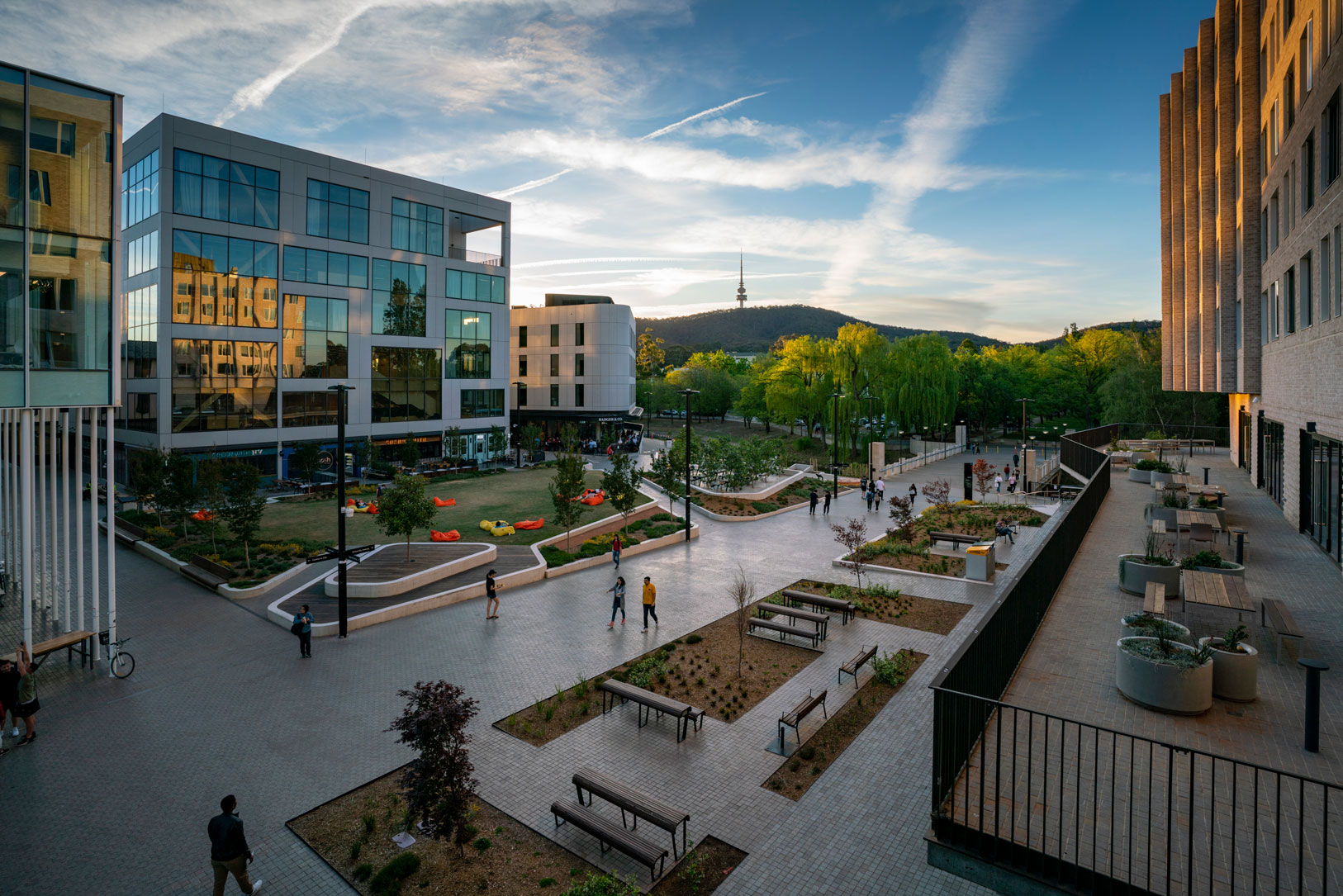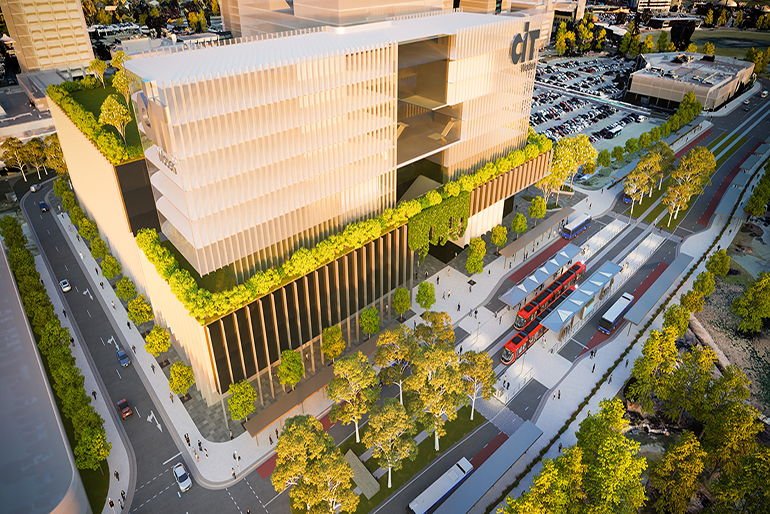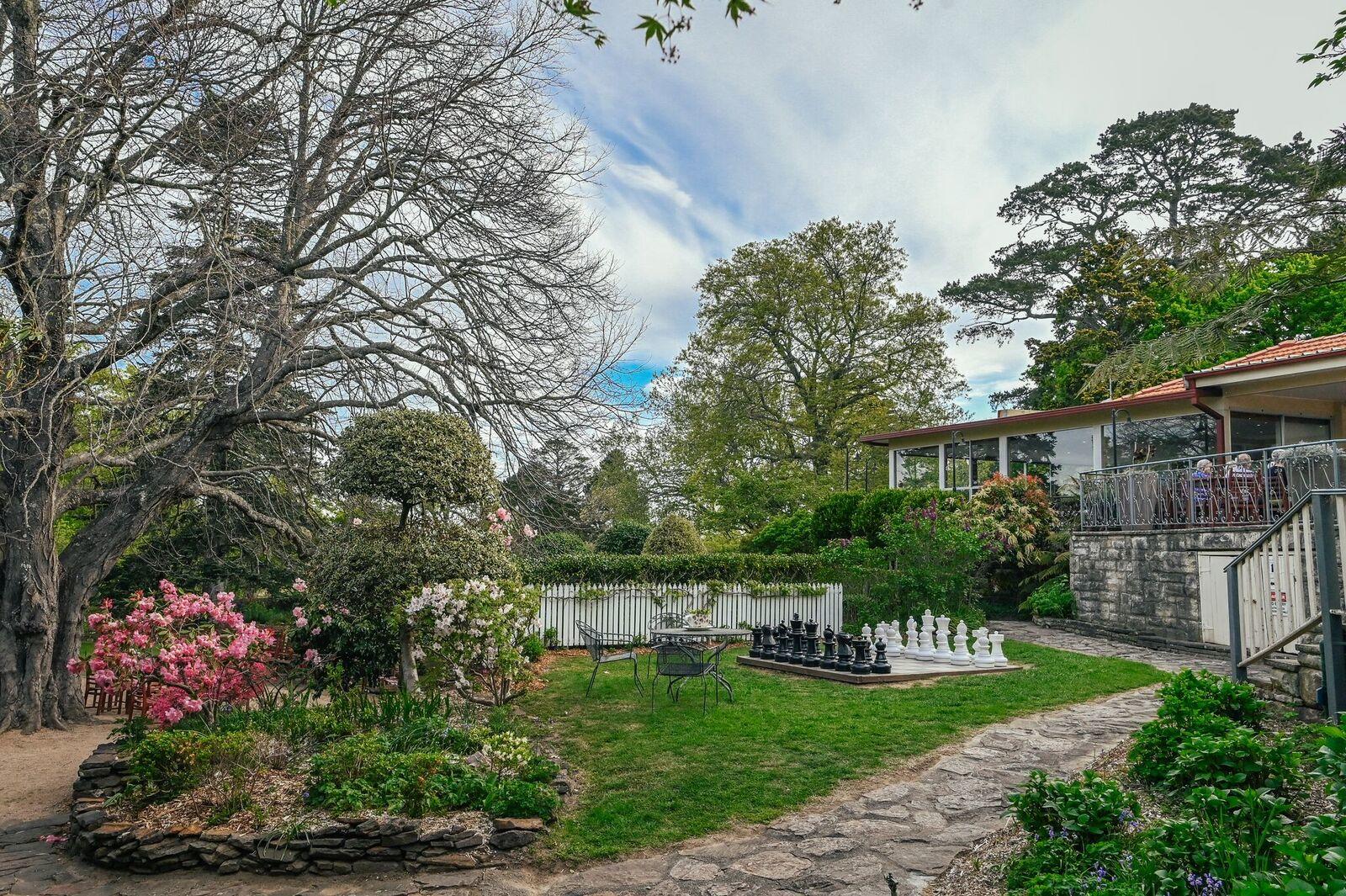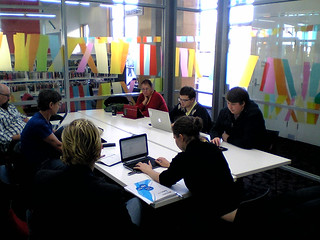Higher Education After COVID-19
- Responding to the Coronavirus Emergency with e-Learning
- Open Content for e-Learning in Response to the Coronavirus
- Online Assessment with e-Portfolios in Response to the Coronavirus
- Tools to engage students online.
- Mentoring student group work online.
- Higher education after COVID-19: Not business as usual
These are online, open to all and free. Suggestions are welcome.
Higher education after COVID-19: Not business as usual
In August 2008 I told my computer science students at the Australian National University that this was my last lecture. Not just the last for the semester, but the last I was ever intending to give. Through a sequence of coincidences I then spent five years teaching online and another seven learning how to integrate a classroom back into my teaching. After a year teaching in mixed mode in a new purpose built teaching building, COVID-19 forced me back to online only teaching. The question then is what I will do, when the COVID-19 pandemic is over and classroom teaching is again possible. The future I see for higher education is Online Plus: there will still be campuses and classrooms, but with the core of the curriculum online, with students out learning while working in the real world. COVID-19 was a White Swan Event for Australian universities: something
they were warned about, knew was coming, were told how to prepare for
and yet failed to act. Can existing universities make the changes they
know are now needed, or will new forms of higher education replace them?
See: Online Plus is the Post-COVID19 Future of Higher Education
Questions for participants:
- How can we replicate water cooler conversations for students and academics online? In "The surprising ways little social interactions affect your health" (New Scientist, 12 August 2020), online interaction with video conferences is not enough. This doesn't replace impromptu water cooler chats which can form new relationships. Some of this is done by teachers with icebreaker exercises, breakout video rooms, team-building exercises and the like. But can these features be built into both the tools and the educational programs? One attempt is Athabasca University's Alumni Connect using the product Ten Thousand Coffees.
- In 2017 I predicted "... we can expect 80% of university education to be delivered on-line by 2020 ...". That happened suddenly due to COVID-19, not with a planned transition as I had hoped. We have the technology and pedagogy to sustain this, can universities find a business model to make it work, or do we need new teaching only institutions?
Higher education after COVID-19
- Blending of vocational and higher education producing job ready graduates
- Qualification platforms standardized globally
- Nested qualifications offering from a micro-credential to a Doctorate
- Global online courses with optional classroom time
- Campuses shared and integrated into community facilities
Pathways to Work, Training and Further Education
"Senior secondary certification requirements and the way learning is packaged should be restructured so that students are not presented with a binary choice between vocational or higher education pathways."
Recommendation 5 of the Report of the review of senior secondary pathways, into work, further education and training, for COAG, Shergold, Calma, Russo, Walton, Westacott, Zoellner & O’Reilly, 17 June 2020.
A recent report to the Council of Australian Governments recommends not presenting students with a binary choice between vocational and university education (Shergold et al, 2020). My own path has been through work, on the job training and then formal university education, supplemented by vocational educational institutions.
COVID-19 has forced much of secondary and higher education online and this provides the opportunity to consider how to integrate them better and provide them more flexibly.
Australian secondary education can be blended into the vocational education and training (VET) system and VET into university. The Australian VET system is already focused on vocational training delivered online, with supplementary classroom teaching. That approach can be adopted by universities. This has implications for the way university academics teach, get paid, and the question as to if university is the best place to do much of vocationally orientated education.
Reference
Looking to the future – Report of the review of senior secondary pathways, into work, further education and training, for the Education Council of the Council of Australian Governments (COAG), by Peter Shergold, Tom Calma, Sarina Russo, Patrea Walton, Jennifer Westacott, Don Zoellner and Patrick O’Reilly, 17 June 2020. URL https://uploadstorage.blob.core.windows.net/public-assets/education-au/pathways/Final%20report%20-%2018%20June.pdf
Degree of the Future is Like a Car Chassis
 |
| MQB Platform for VW, Audi, SEAT, Škoda, coupes, hatchbacks, saloons, station wagons, convertibles, MPVs, SUVs, and panel vans (Ra Boe / Wikipedia) |
VW, Audi, SEAT and Škoda factories make dozens of different vehicles sold at different prices to different customers around the world, based on the same MQB engineering "platform". It was worth the Volkswagen Group to have hundreds of engineers spend years and billions of dollars, so the one engineering design could be used globally for a decade or more. In the same way I suggest companies, national and international university consortia can design qualification platforms for specific disciplines. Each platform would allow for nested qualifications, ranging from a three week micro-credential to a multiyear doctorate. The basic curriculum would be built assuming asynchronous online delivery, but local institutions could offer online, blended, hybrid, face to face, and work integrating learning.
Global Professional Standards
 |
| Excerpt from ACS Certified Professional Certificate |
Global Online Courses
One course, four institutions:- Green Technology Strategies (ACS and Open Universities Australia)
- COMP7310: ICT Sustainability (ANU)
- Computer Science COMP 635 (Athabasca University)
Aligned with Skills Framework for the Information Age (SFIA) competencies.Global professional standards and online courses make the global delivery of course materials much simpler. In 2008 the Australian Computer Society commissioned me to design the course Green Technology Strategies aligned with the Skills Framework for the Information Age (SFIA) and delivered using Moodle. This was also offered through the Open Universities Australia consortium of institutions. The course was later offered to Australian national masters of computing students, also online using Moodle and aligned with Skills Framework for the Information Age (SFIA) competencies. The course was adapted for North America by Brian Stewart and is still offered as COMP 635 by Athabasca University, also using Moodle. Like the Like Volkswagen's MQB platform, considerable effort was required to design the course maters, but they could then be used globally for a decade.
High End Campus of The Future Looks Like a Mall
 |
| ANU Kambri |
The campus of the future will look like a shopping center, a hotel, an office building, or a library. In this way it can be more integrated with everyday life, provide facilities to the community and have some income independent of student fees. While there will be students and teachers on campus, this will only be about one fifth of the learning community, with the other four fifths online. That will lower the cost of the campus, by having it used more intensively. However, there may be a need for consolidation of campuses, as there will be an excess of space during the transition.
Even general purpose university campuses are tending to look less like universities and more like resorts and shopping malls. The Australian National University Kambri development, opened in 2019, has an art gallery, conference center, cinema, drama theater, cafes, bars, restaurants, medical center, pool, and gym. There are also offices for university administrators, and apartments for students. The performance spaces double as lecture theaters, some with retractable tiered seating to make a large flat floor space. This allows different teaching styles and use of the same even in a pandemic, when closely packed tiered seating is not appropriate.
Medium Level Campus Looks Like an Office Block
 |
| Artists Impression of Planned CIT Campus Woden, Canberra (CIT, 2020) |
Many university campuses will be in commercial style office buildings. A good example, is the planned Canberra Institute of Technology (CIT) building in Woden, Canberra. This will be located at a bus interchange, adjacent to a shopping center, providing easy access. However, given that most students will be studying online most of the time, it is not clear how much of the building will be actually used by staff and students, or it it will be used by government and commercial tennants.
Work Integrated Learning Campus Hotel
 |
| Nesuto Leura Gardens Hotel operated by the Blue Mountains International Hotel Management School at Torrens University |
In 2019 I reserved a room at the Leura Gardens Hotel in the Blue Mountains near Sydney. I selected this as the closest to the Everglades Historic House and Gardens to attend the Leura Shakespeare Festival. Only after arriving did I notice that the hotel is staffed by students of the Blue Mountains International Hotel Management School (BMIHMS), part of Torrens University. There is a campus of the university across the road from the hotel. This is a form of Work Integrated Learning (WIL), where rather than send the student to workplace, the educational institution provides the workplace (in some cases a large corporation, government agency or military organization has its own educational institution).
The year before I stayed at Hotel Samudra, Colombo, part of the Sri Lanka Institute of Tourism & Hotel Management (SLITHM). The Hotel Kurragong in Canberra was previously part of a hotel school also. In a similar way, teaching hospitals are part of the medical faculties of universities. There is scope for integrating other disciplines into workplaces.
WIL in a Government Agency
 |
Cameron Offices, Canberra (Public domain)
|
As a young "programmers assistant" I worked downstairs in the Australian Bureau of Statistics, and then went upstairs for formal training. This was not as part of any formal educational program. The Australian Public Service (APS) now has programs for apprentices and cadets who study part time at VET institutions and universities, while working. There is scope to expand such programs to smaller employers and startups.
Multi University Campus Building
 |
Torrens Building, International University Precinct, Adelaide (by Bahudhara / CC BY-SA)
|
Universities can share campuses. Adelaide has the Torrens Building, in its International University Precinct. The has provided office and teaching space for Carnegie Mellon University , Torrens University, Cranfield University, and University College London. While sharing a building, the individual university use photos of the outside shown just their own banner, cropping those of the other institutions. In this way universities can present an individual identity, while sharing resources.
While the Adelaide campuses of Carnegie Mellon, Cranfield and University College London are satellite campuses of overseas universities, Torrens University Australia is slightly different. This is an Australian university, but also part of the for-profit Laureate Education Incof Baltimore. Laureate has almost one million students worldwide and so can spread the cost of course development better than it could for just their 11,500 Australian students, while still having local campuses and a local identity. Laureate has also incorporates specialist campuses such as the Blue Mountains International Hotel Management School.
Community Campus Colocated with High School or Public Library
 |
| Gungahlin Library, Canberra |
Co-curricular Activities
 |
| GovHack 2013 Organizers Meeting at the Gungahlin Library |
One Classroom of the Future Has Furniture on Wheels
 |
| Wall mounted LCD screens & desks on wheels at ANU Marie Reay Teaching Centre |
The Marie Reay Teaching Centre at Australian National University opened in 2019, with five stories of rectangular flat floor classrooms, with electronic screens on the walls and flip top tables on wheels. The spaces can be rearranged from class to class as required for curricular and co-curricular activities, such as hackerthons.
Reference
Worthington, T. (2020, June). Blend
and Flip for Teaching Communication Skills to Final Year International
Computer Science Students. Paper accepted for the IEEE International
Conference on Teaching, Assessment and Learning for Engineering (TALE),
10-13 December 2019, Yogyakarta, Indonesia. URL https://openresearch-repository.anu.edu.au/handle/1885/204833
The Other Classroom of the Future is Online
 |
| Zoom Meeting of the ASCILITE MLEARGING Sig (2020) |
Reference
Worthington, T. (2014, August).
Chinese and Australian students learning to work together online:
proposal to expand the New Colombo Plan to the online environment. In 2014 9th International Conference on Computer Science & Education (pp. 164-168). IEEE. URL https://doi.org/10.1109/ICCSE.2014.6926448
The University is an Idea, Not a Place
 |
| Zen and the Art of Motorcycle Maintenance, Robert M. Pirsig, 2006 |
Chapter 13, Zen and the Art of Motorcycle Maintenance, Robert M. Pirsig, 2006
In early 2020 Australian universities had crash programs to move teaching online, first to reach international students stranded overseas and then to minimize the risk of the transmission of COVID-19 for domestic students at home. Face-to-face teaching will resume, gradually, in the next few years. We will still have university campuses, as a place for research, administration and some teaching. But I suggest the real education should continue to take place, as it is now, online, wherever the student needs to be. The average student will need to be in a classroom for about 20% of their study, but otherwise should be out in the world learning and earning.
COVID-19 a White Swan Event for Unis
 |
| NUS eLearning Week Video, National University of Singapore, 2014 |
Many commentators have described the COVID-19 pandemic as a "black swan event": completely unexpected, but something we should have in retrospect. However, the virus which causes COVID-19 is called "SARS-CoV-2". The similar SARS-CoV-1 was identified in 2003 outbreaks in East Asia resulted in universities such as NUS, having drills to practice online teaching to students at home.
Australian universities face financial difficulties due to the loss of international students. However, the financial risk to these institutions from over-dependence on international student fees was widely discussed in the media and at education conferences.
In 2016 in the conclusion of my e-Portfolio for my MEd at Athabasca University, I identified the long term risk of international students seeking other study options, and the short term risk of an international incident keeping students from Australian campuses. In the MEd, subsequent book, and presentations, I suggested to my university colleagues they begin the transition to online teaching and be ready to switch quickly. While Australian universities have been able to implement online learning quickly, many at universities assume this will be a short term measure, before business as usual resumes: it will not.
The term Black Swan Event come from the idea that Europeans had never seen a black swan and so assumed there were none. But this idea is odd to those in Australia, where black swans are common. The University of Western Australia is on the Swan River and has a black swan on its coat of arms. COVID-19 was a White Swan event for Australian universities: something they were warned about, knew was coming, were told how to prepare for and yet failed to act.
Reference
Chandran, R. (2010, May). National University of Singapore's Campus-Wide ELearning Week. In Global Learn (pp. 2062-3302). Association for the Advancement of Computing in Education (AACE). URL https://cpb-us-w2.wpmucdn.com/blog.nus.edu.sg/dist/0/119/files/2011/03/national-university-of-singapores-campus-wide-elearning-week.pdf
Education and online learning in a pandemic
 |
| Australia and the post-pandemic world, ANU Symposium, 22 October 2020 |
The Australian National University will hold an online symposium on "Australia and the post-pandemic world", 22 October 2020. This includes a section on "Education and online learning in a pandemic", including myself on "Australian Higher Education in the Post-pandemic World". Suggestions welcome.
Synchronising Asynchronous e-Learning Research Project
"... synchronization of the asynchronous learning process ..." (Worthington, p. 619, 2013)
Worthington, T. (2013, April). Synchronizing asynchronous learning-Combining synchronous and asynchronous techniques. In Computer Science & Education (ICCSE), 2013 8th International Conference on (pp. 618-621). IEEE. URL https://doi.org/10.1109/ICCSE.2013.6553983
WhatsApp for Teaching Microbiology
- Student Sensitization
- Faculty Sensitization
- Module Preparation
- Formation of WhatsApp group (students and faculty)
- Putting up of questions related to topic on the group
- Self directed learning by students on topic and answers being posted on the group (by
- some students who were active responders, while others learnt as passive learners)
- Discussion on the answers posted and posting of new questions (activity lasted for one
- week)
- Group dissolved after a week
- Didactic lecture taken on said topic
- Feedback by students and faculty
This paper on using WhatsApp for teaching microbiology is relevant to previous discussion of tools in this series. I noticed it, because it cites my 2013 paper on asynchronous learning.
Reference
Singla, N., Kumar, M. B., & Badyal, D. (2020). Introduction of social media learning tool in teaching of Microbiology. South-East Asian Journal of Medical Education, 14(1). URL http://doi.org/10.4038/seajme.v14i1.188
Worthington, T. (2013, April). Synchronizing asynchronous learning-Combining synchronous and asynchronous techniques. In 2013 8th International Conference on Computer Science & Education (pp. 618-621). IEEE. URL https://doi.org/10.1109/ICCSE.2013.6553983


No comments:
Post a Comment